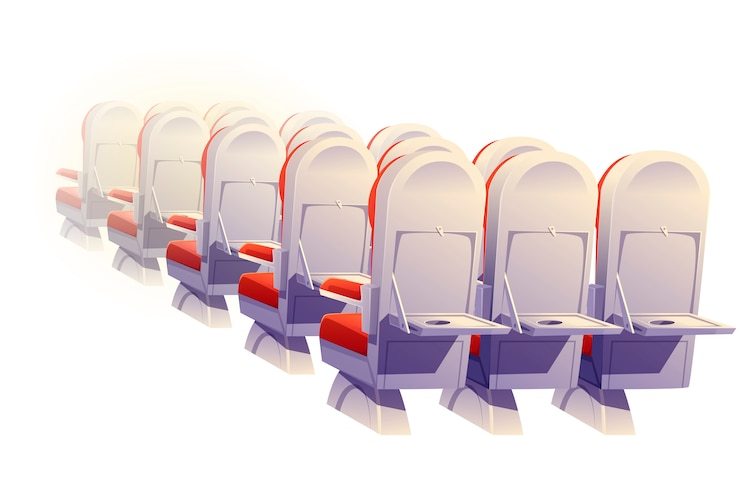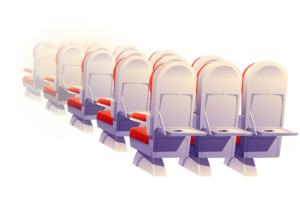Have you ever found yourself battling silently with the person sitting in front of you on an airplane? That jaw-dropping moment when they suddenly slam their seat backward, and you’re left gasping as your personal space gets completely invaded? Dive into the chaotic world of plane seat drama, where the unspoken rules of airplane seat recline etiquette dominate your travel experience. We’re exposing this common air travel nightmare, dissecting the various perspectives, tackling the challenges, and unveiling potential solutions to this rage-inducing dilemma.
Have you ever found yourself battling silently with the person sitting in front of you on an airplane? That jaw-dropping […]
The Great Recline Debate: Conquer Your Space
You’re comfortably nestled in your airplane seat, laptop powered up, ready to crush some work or immerse yourself in a movie. Suddenly, without warning, the seat in front of you jolts backward, nearly crushing your knees and launching your drink into a precarious dance on the edge of your tray table. Relate to this? Seems to be trending on flights around the world, igniting what seasoned travelers classify as the “recline wars.”
The Recliner’s Perspective
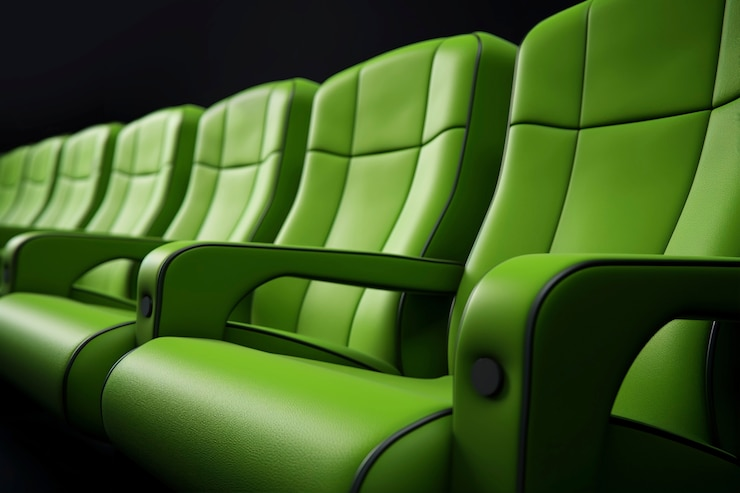
From the point of view of the person reclining, they might argue:
● “I paid for this seat, and reclining is a feature that comes with it.” (How convenient for you, darling!)
● “I’m trying to get comfortable on a long flight.” (Because your comfort is clearly the only thing that matters.)
● “I didn’t mean to cause any inconvenience; I’m just trying to rest.” (Oh, how thoughtful of you to consider others… not.)
These are totally valid points. After all, if airlines didn’t want passengers to recline, they wouldn’t install seats with this capability, right? Oh wait, they probably just love watching us fight over inches of space! Keep reading, just wait to hear what the inches of legroom used to be before airlines decided to MAXIMIZE their profits…
The Recliner’s Dilemma
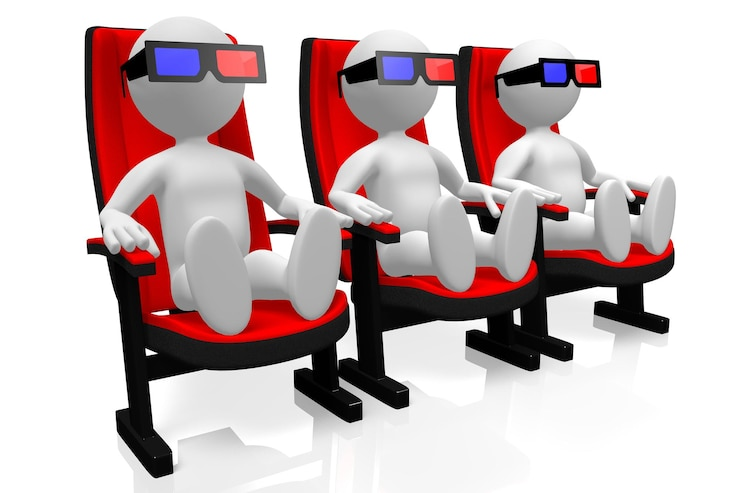
On the other side of the seat back, we have the person whose space is being encroached upon. Their thoughts might include:
● “I was using my tray table, and now I can’t even open my laptop properly.” (But sure, your nap is way more important than my work deadline.)
● “My legs were already cramped, and now I have even less space.” (As if economy wasn’t cozy enough already!)
● “I feel claustrophobic with the seat so close to my face.” (Nothing like getting intimate with a stranger’s headrest.)
Both sides have legitimate concerns, which is why the airplane seat recliner debate continues to be a hot topic among travelers. Shocking, I know.
The Evolution of Airplane Seating
To understand the current state of affairs, it’s helpful to look at how airplane seating has evolved over the years. Spoiler alert: It’s not a happy story.
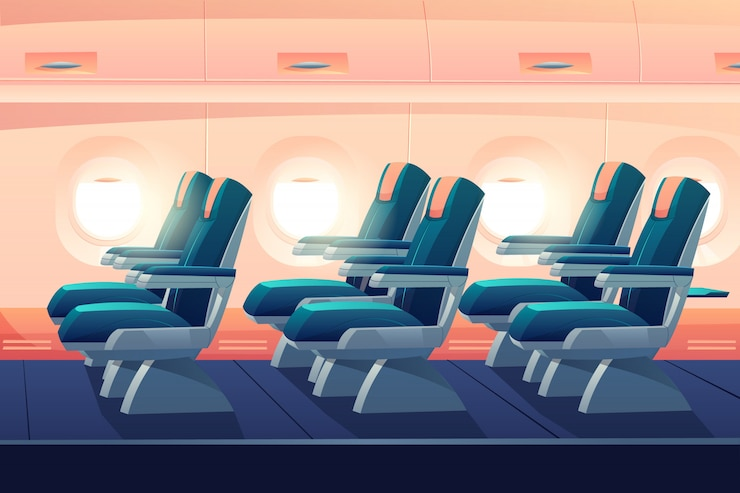
The Golden Age of Air Travel
In the early days of commercial aviation, flying was a luxury reserved for the wealthy. Seats were spacious, legroom was ample, and reclining wasn’t an issue because there was plenty of space for everyone. But don’t worry, the airlines made sure to ruin all that good stuff.
The Era of Budget Airlines
The rise of budget airlines in the 1970s and 1980s led to a significant shift in the industry. To offer lower fares, these carriers crammed more seats into their planes, reducing legroom and personal space. Don’t we all just love that numb feeling in our legs after a 6-hour flight? They need more sleep than us anyway.
Today’s Tight Squeeze
In modern aircraft, especially in economy class, space is at a premium. The average seat pitch has shrunk from 35 inches in the 1970s to about 31 inches today, with some budget airlines offering as little as 28 inches. How generous! This reduction in space has amplified the impact of reclining seats, turning what was once a minor inconvenience into a major source of tension between passengers. Who could have possibly seen that coming?
The Psychology Behind the Recline
What drives people to recline their seats, and why does it bother others so much? The answer lies in a complex mix of psychology, social norms, and personal comfort. Or maybe some people just enjoy being jerks.
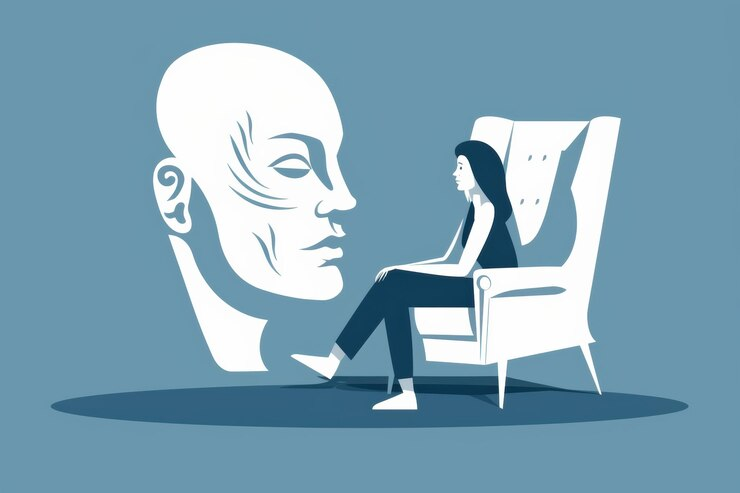
The Need for Control
In the confined space of an airplane cabin, passengers often feel a lack of control over their environment. Reclining the seat can be seen as a way to assert some control and create a sense of personal space. Because nothing says “I’m in control” like angering the person behind you for five hours.
Entitlement vs. Consideration
The recline debate often boils down to a clash between feelings of entitlement and consideration for others. Those who recline may feel entitled to use all the features of their seat, while those affected by the recline may feel that consideration for fellow passengers should take precedence. Crazy concept, right?
The Empathy Gap
It’s easy to forget about the person behind you when you can’t see them. This “out of sight, out of mind” mentality can lead to a lack of empathy for how our actions might affect others. But please, don’t let that stop you from living your best reclined life!
When Tensions Rise: Dealing with Airplane Seat Conflicts
Despite our best efforts, conflicts over reclining seats can and do occur. Here’s how to handle these situations gracefully (or at least without getting arrested):
Stay Calm
If someone reclines into your space without warning, take a deep breath before reacting. Remember, they may not be aware of how their actions are affecting you. Or they might just be completely self-absorbed. Flip a coin!
Politely Address the Issue
If you’re uncomfortable, calmly explain the situation to the person in front of you. For example, “Excuse me, I was working on my laptop. Would you mind moving your seat up a bit while I finish?” Adding “pretty please with sugar on top” is optional but ineffective.
Seek Assistance if Necessary
If you can’t resolve the issue directly with the other passenger, don’t hesitate to ask a flight attendant for help. They’re trained to handle these situations diplomatically and secretly love mediating petty disputes at 30,000 feet.
Consider Alternatives
If all else fails, see if you can move to another seat. Sometimes, a change of location can resolve the issue entirely. Or you could just sit there and silently seethe for the remainder of your journey. Both valid options!
The Role of Airlines and Aircraft Manufacturers
While passengers grapple with the ethics of reclining, airlines and aircraft manufacturers have a significant role to play in addressing this issue. Not that they seem particularly interested in doing so.
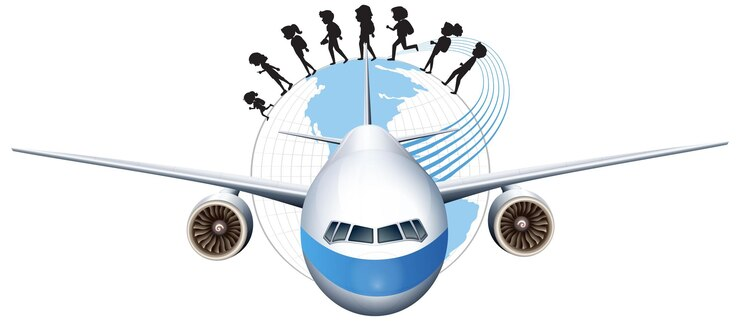
Seat Design Innovations
Some airlines are exploring new seat designs that aim to minimize the impact of reclining on fellow passengers. For example:
● Fixed-shell seats that slide forward instead of reclining backward (genius, took them only 50 years to figure that one out)
● Seats with a more limited recline range (because 2 inches was just too generous)
● “Knee-saver” seat pockets that provide extra legroom (a whole extra centimeter, how luxurious!)
Clear Policies
Airlines could help by establishing and clearly communicating policies on seat reclining. Some carriers have already taken steps in this direction, such as limiting recline on short-haul flights. The rest are still enjoying the in-flight entertainment of passenger conflicts.
Education and Awareness
Including information about reclining etiquette in pre-flight safety videos or announcements could help raise awareness and promote considerate behavior among passengers. But that would mean admitting there’s a problem, and we can’t have that, can we?
Beyond Reclining: Other Common Airplane Pet Peeves
While the airplane seat recliner debate often takes center stage, it’s just one of many potential sources of friction between passengers. Let’s explore some other common airplane pet peeves and how to deal
with them:
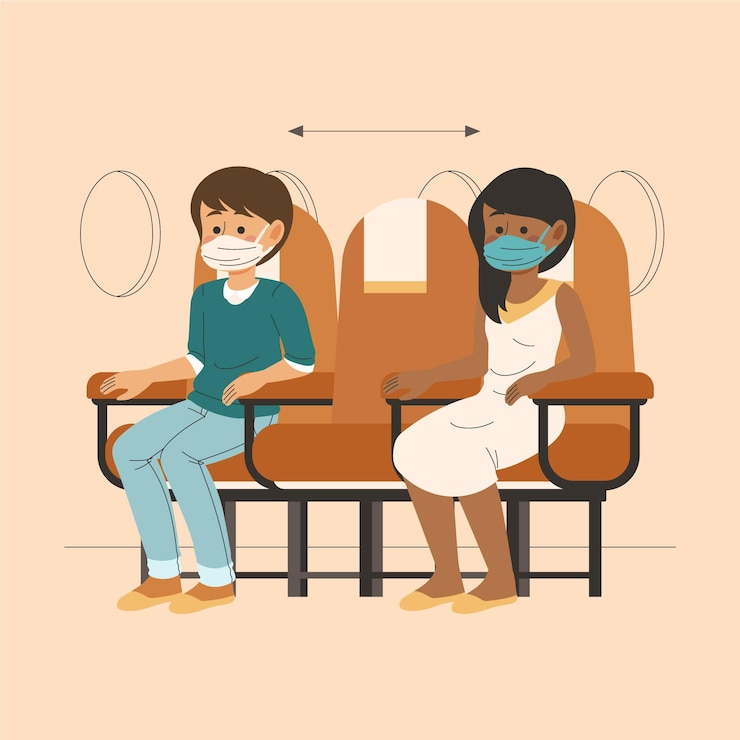
Armrest Hogs
The battle for the armrest, especially the coveted middle seat armrests, is another classic airplane conflict. A general rule of thumb is that the middle seat passenger gets priority on both armrests as a consolation for their less-than-ideal position. But feel free to fight to the death over that precious 2-inch width of plastic.
Chatty Seatmates
While some people enjoy in-flight conversations, others prefer peace and quiet. If you’re not in the mood to chat, polite but clear signals like putting on headphones or focusing on a book can help convey your preference. If that fails, pretending to fall into a sudden coma is always an option.
Aromatic Foods
Strong-smelling foods can be a source of discomfort in the confined space of an airplane cabin. If you’re bringing food on board, consider how its aroma might affect those around you. Or don’t, and enjoy being that person with the tuna sandwich and hard-boiled eggs.
Personal Hygiene Issues
Long flights can be challenging for personal hygiene, but making an effort to stay fresh can greatly improve the experience for everyone. Bringing along items like deodorant, breath mints, and face wipes can help. Revolutionary concept: showering before your flight is also an option!
Noisy Children
While parents can’t always control their children’s behavior, fellow passengers can come prepared with noise-canceling headphones or earplugs to minimize disruptions from “The Little Dears.” Because nothing says “relaxing journey” like a symphony of screaming toddlers.
Revolutionizing Air Travel: Will the Recline Debate Ever Cease?
As we anticipate the future of air travel, it’s crucial to analyze how cutting-edge technology and evolving social norms might transform the great recline debate. Spoiler alert: probably not.
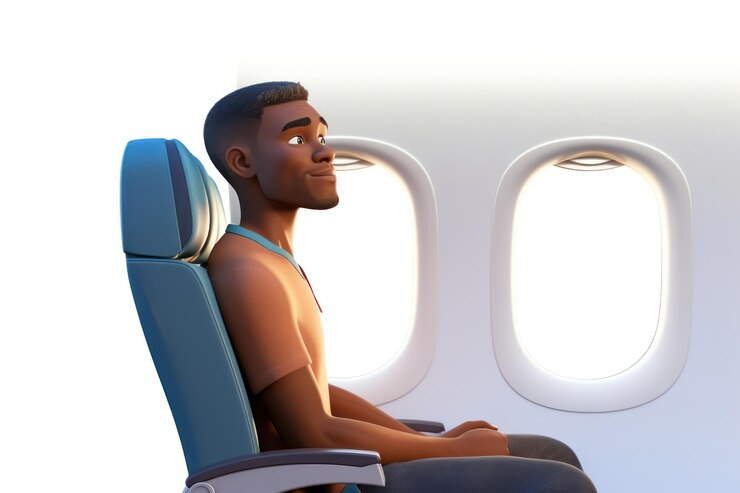
Revolutionize Your Flight with Virtual Reality and In-Flight Entertainment
Breakthrough advancements in virtual reality technology could potentially transform the physical orientation of our seats into a non-issue. Imagine being able to immerse yourself in a virtual environment where you experience unlimited space, escaping the reality of your actual seating position.
Fantastic, now we can pretend we’re not crammed in like sardines!
Engineer New Aircraft Designs
Future aircraft designers are crafting revolutionary concepts that will prioritize passenger comfort in groundbreaking ways. Explore concepts that propose pod-like seating arrangements that eliminate the need for traditional reclining altogether. I’m sure airlines will implement these right after they install those gold-plated toilets we’ve been anticipating for decades.
Transform Social Norms
As awareness of the recline issue escalates, we might witness a dramatic shift in social norms around airplane etiquette. Perhaps in the future, not reclining will be established as the default, polite behavior.
And perhaps pigs will fly… oh wait.
Customize Your Seating Options
Airlines might revolutionize booking by offering more personalized seating options, enabling passengers to choose seats based on their preferences for reclining or remaining upright. Unlock this premium feature for just an additional $99.99, of course!
Mastering the Friendly Skies with Empathy

The phantom conversation with the airplane seat recliner will likely persist as long as we share confined spaces in air travel. However, by embracing the situation with empathy, initiating communication, and demonstrating consideration, we can all contribute to a more enjoyable flying experience. Or we could just continue passive-aggressively kneeing the seat in front of us. Choose wisely!
Remember, every passenger on that plane is embarking on their own journey, with their own reasons for traveling and their own comfort needs. By practicing mindfulness of those around us and displaying willingness to compromise when necessary, we can transform potential conflicts into
opportunities for mutual understanding and respect. How utterly heartwarming. The next time you find yourself reaching for that recline button or feeling the seat in front of you crush into your space, take a moment to consider the broader context. Practicing patience, offering a friendly word, and showing willingness to find common ground can dramatically improve the air travel experience for everyone. Or you could just silently fume and craft a scathing tweet about it later.
So, as you embark on your next flight, carry with you not just your luggage, but also a spirit of cooperation and understanding. After all, we’re all trapped in this together, 30,000 feet up in the air, sharing a remarkable journey across the skies. Whether we like it or not. Safe travels, you beautiful, sardine-packed travelers!

